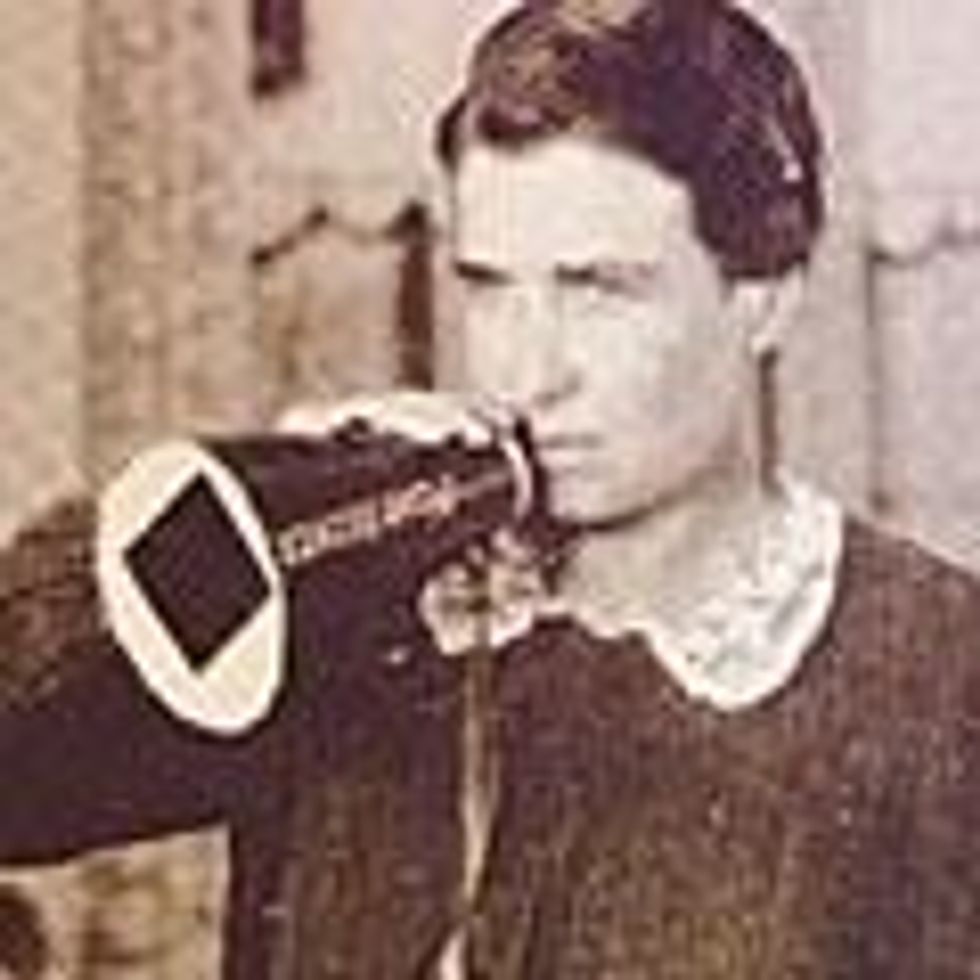Women
Who the F Is … Director Dorothy Arzner?

Meet one of Hollywood's first female directors.
October 16 2013 4:33 PM EST
December 09 2022 9:12 AM EST
By continuing to use our site, you agree to our Private Policy and Terms of Use.

We go back to classic Hollywood for this week's Who the F Is, a feature on estimable lesbians and bi women who might not be on your radar — but they should.
Who the F Is … Dorothy Arzner?
Who she was: One of the first women directors in Hollywood, she saved Katharine Hepburn from wearing a leopard skin and had a torrid affair with Joan Crawford
What she accomplished: The trouser-wearing, out lesbian Arzner (1897-1979) was one of the few women directors in the early years of the motion picture industry, and she has been cited as the only female director to make a successful transition from silent films to talkies. The daughter of Los Angeles restaurateurs, Arzner initially considered becoming a doctor, drove an ambulance in World War I, and entered the movie business in the 1920s as a script typist. She moved up to editor, working on such silent classics as Blood and Sand, The Covered Wagon, and Merton of the Movies for Paramount. In 1927, after she threatened to leave the studio for an opportunity to direct for a smaller company, Paramount head B.P. Schulberg made her a director. She directed many top stars for that and other studios, in films that took an intelligent look at modern life, sometimes comically and sometimes tragically: The Wild Party (1929), with Clara Bow and Fredric March; Craig’s Wife (1936), starring Rosalind Russell and John Boles; and Dance, Girl, Dance (1940), with Maureen O’Hara and Lucille Ball. The Wild Party was popular silent star Bow’s first talkie, and Arzner helped her a great deal with the adjustment, plus the director created the boom microphone by attaching the mike to a rod so it could hang above the performers, therefore letting them move about naturally on the set rather than use such early-talkie methods as speaking into a mike hidden in a vase of flowers.
Probably her most famous film today is 1933’s Christopher Strong, Katharine Hepburn’s second movie. Hepburn played an independent-minded British aviatrix in love with a married politician, portrayed by Colin Clive. “I chose to have Katharine Hepburn from seeing her about the studio [RKO],” Arzner told interviewers Karyn Kay and Gerald Peary in 1974. “She had given a good performance in Bill of Divorcement (1932), but now she was about to be relegated to a Tarzan-type picture. I walked over to the set. She was up a tree with a leopard skin on! She had a marvelous figure; and talking to her, I felt she was the very modern type I wanted for Christopher Strong.” Hepburn and Arzner were equally strong-willed and are said to have clashed on the set, but Arzner eventually got the star to submit to her directorial authority. Hepburn apparently had no hard feelings; in 1975, when the Directors Guild of America honored Arzner, the actress sent a telegram reading, “Isn’t it wonderful that you’ve had such a great career, when you had no right to have a career at all?” Arzner was, by the way, the first woman member of the DGA.
Arzner got along well with another top star, Joan Crawford, with whom she worked in the 1930s on The Bride Wore Red and The Last of Mrs. Cheyney. Some sources describe them as close friends, but according to the team behind Sophisticated, an in-the-works biopic about Arzner, it was a “fiery affair.” Years later, Arzner directed Pepsi-Cola commercials as a favor to Crawford, whose last husband was the company’s chairman, Alfred Steele.
During World War II, Arzner, like top male directors such as John Ford and George Stevens, made films aimed at helping the war effort. After the war she left the world of feature films behind, working in television and theater instead. She went on to teach filmmaking at the Pasadena Playhouse and the University of California, Los Angeles; at the latter, her students included Francis Ford Coppola.
Although many modern scholars and critics see feminist messages and lesbian subtext in Arzner’s movies, the filmmaker herself wanted to be considered simply a director, not a woman director or lesbian director. Not that she was closeted or ashamed, or unaware of the trails she was blazing for women. “She made her place in a completely male world,” Sophisticated producer Wendy Haines told the Long Beach Press-Telegram. “Her drive to do what she loved in spite of the world around her telling her it wasn’t possible inspires me.” Haines added, “The other thing that I find so compelling about Dorothy is her character. She was a lesbian, dressed very dapper, would be considered butch by today’s standards. In spite of the social pressures to conform, Dorothy remained true to herself.” Arzner had dalliances with many women, the love of her life, according to Haines, was choreographer Marion Morgan. To find out more about Sophisticated, written by Marilyn Freeman, go here, and take a look at a promo for it below.
Choice quote: “My philosophy is that to be a director you cannot be subject to anyone, even the head of the studio. I threatened to quit each time I didn’t get my way, but no one ever let me walk out.” — Arzner, as quoted in Ally Acker’s book Reel Women.
Want more breaking equality news & trending entertainment stories?
Check out our NEW 24/7 streaming service: the Advocate Channel!
Download the Advocate Channel App for your mobile phone and your favorite streaming device!